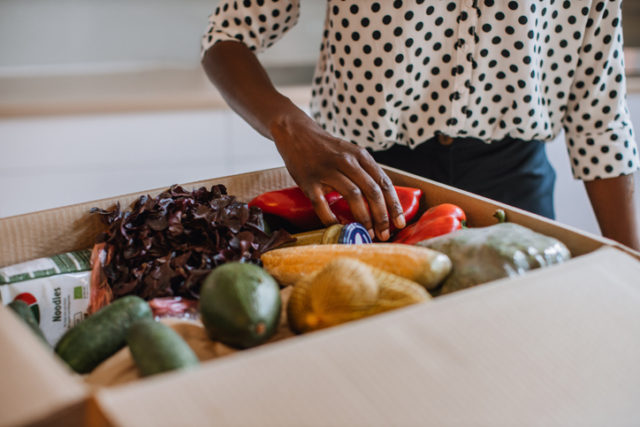
About 17 million households in the U.S. are food insecure, representing about 13% of all households in the country. A new report shows the key drivers of food insecurity, including having a disability and being a single parent.
The report came from FarmboxRx, a Boston-based company that works with payers (primarily Medicaid and Medicare) to deliver food boxes, cooking kits and pantry items to members’ doors. In June, it launched a program called Feed by FarmboxRx, which supplied monthly food boxes to people affected by cuts to pandemic-era Supplemental Nutrition Assistance Program (SNAP) increased benefits. Financial aid in grocery purchases were reduced by $95 to $250 a person, and inflation and the high cost of living have further exacerbated the issue.
FarmboxRx received more than 2,000 applications for the program, and said it found these four main reasons for why many Americans struggle to access healthy food:
- Disability and disease: Oftentimes, someone in the home has a disability or a chronic medical condition that makes it difficult to work and make money. In addition, they may have to be on certain diets that require more costly foods.
- Fixed income: Sometimes someone in the household is living on a fixed income — such as social security — that doesn’t effectively cover their expenses and food.
- Age: If someone is over the age of 65 and isn’t working or is unable to work, then their income may not cover expenses and food.
- Single parent: Many households battling food insecurity are single-parent households, meaning they only have one source of income that makes it difficult to afford expenses and food.
The report also uncovered the five states most affected by food insecurity: New York, Pennsylvania, California, Texas and Ohio. Within these states, certain cities are particularly impacted, including the Bronx, New York; Cleveland, Ohio; San Diego, California; and Houston, Texas.
The vast majority of the Feed by FarmboxRx applicants were already receiving SNAP, yet a common theme was that SNAP was not enough to cover their monthly food expenses. One single-person household recipient stated that the “SNAP benefit runs out quickly.” But even those who don’t qualify for SNAP struggle.
“I make $10 too much to qualify for SNAP,” another single-person household recipient stated. “I did qualify until I got my cost of living increase this year; before that I received $280 in SNAP benefits. Now I have none. I was given no notice and simply cut off. I live alone, have no car, and the closest grocery store is miles away. Most of the time I eat what I can buy from the Dollar Store because it’s a two-mile walk. I have one sister nearby who is on disability after an accident, so I cannot ask her for a ride. It’s become nearly impossible for me to eat healthy.”
Ashley Tyrner, CEO and co-founder of FarmboxRx, has her own experience with food insecurity that inspired her to start the company, as well as publish this report.
“It really goes back to my backstory. Thirteen years ago I was pregnant on Medicaid on food stamps with my now 12-year-old daughter and I’ve walked a mile in people’s shoes that rely on SNAP in order to make ends meet,” Tyrner said in an interview.
Photo: vgajic, Getty Images








